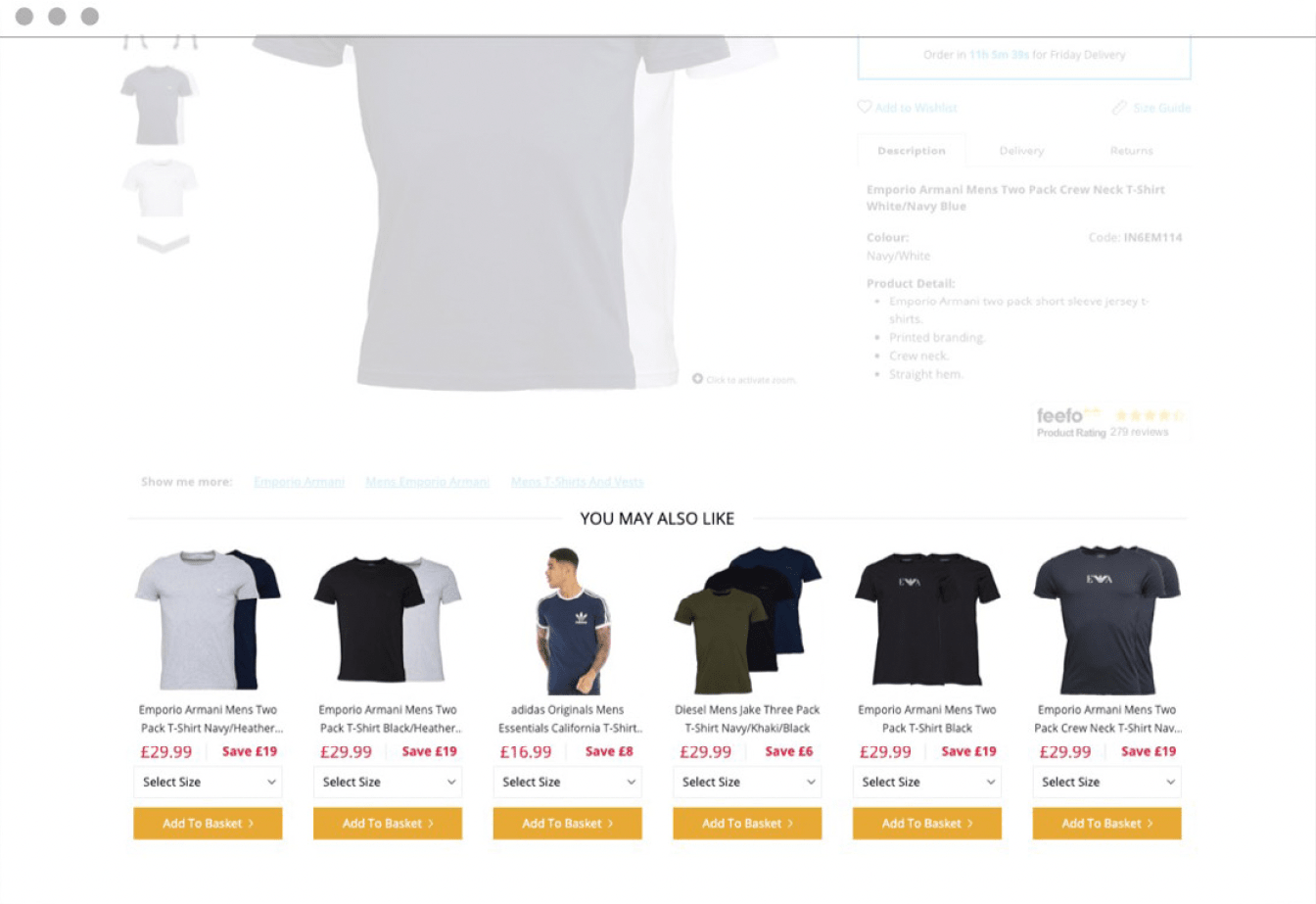A popular sales strategy that retailers use is suggestive selling. Also known as “cross selling” or “upselling”, a suggestive sell is when sales associates encourage customers to buy complementary products or opt for a more expensive product altogether. But how do you cross the line from traditional cross-selling and upselling to intelligent suggestive selling?
When done right, suggestive selling techniques don’t only provide a great customer experience but also increase your store’s total revenue by increasing average order value (AOV).Research suggests that up to 30% of retail revenue is typically due to upselling and cross-selling efforts. On top of boosting sales, suggestive selling can also be highly profitable as it does not incur further acquisition costs and thus sees lower cost of sales.
Despite these benefits, most brands and retailers struggle to implement suggestive selling techniques effectively on their online retail sales. In particular, they either under-utilize product recommendations that can drive customer satisfaction, or struggle to recommend upsells and cross sells that are relevant to the original purchase.
Luckily, brands and retailers can benefit from intelligent product recommendations powered by machine learning (ML) algorithms, alongside other tools available to optimally execute upselling and cross selling efforts.
Still don’t know where to start? No need to worry-we’ll explain how you can leverage machine learning and product recommendations to ensure that the right suggestive sale is recommended at the right place and time to the right customer, driving more sales and positively impacting the bottom line.
Key Tactics for Your Suggestive Selling Strategy
Complementary Product Recommendations
In both cross selling and upselling, product recommendations predicated on product knowledge play a critical role. Complementary product recommendations aim to transform single-product buyers into multi-product ones by showcasing related products that experience joint demand. For example: When a shopper is ready to buy a phone, you could recommend batteries, cases, or chargers, which commonly make up a recommended bundle.
Complementary product recommendations come in different shapes. For instance, “Shop the look” is an interesting use case for a fashion retailer that helps customers create a complete outfit based on a selected item of clothing . Once an item has been selected, shoppers can buy other items that would ideally complete the outfit shown on the product description page.
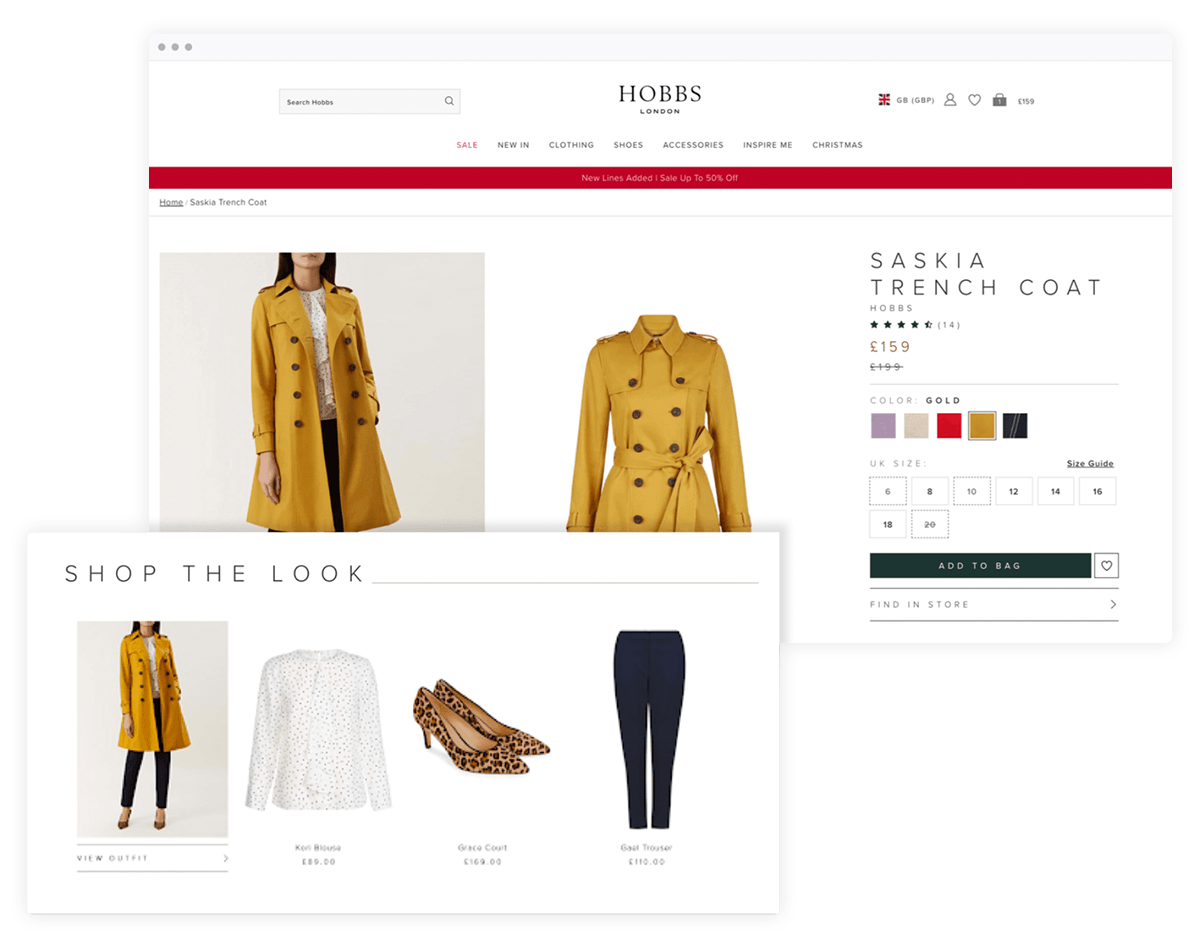
This is a great opportunity for cross selling. A number of brands and retailers have started to encourage shoppers to add products to their carts by urging them to “shop this look” or “shop this interior.” They then link to related items for sale, answering the needs of many customers looking for the right combination. For instance, you can see here how one of Coveo’s customers, Hobbs, has deployed ‘Shop the Look’ recommendations to suggest additional accessories that go with trench coat being looked at.
A word of caution: it’s worth noting that the ‘Shop the Look’ is especially helpful in verticals such as fashion or lifestyle products. It may not be as effective or suitable in other contexts.
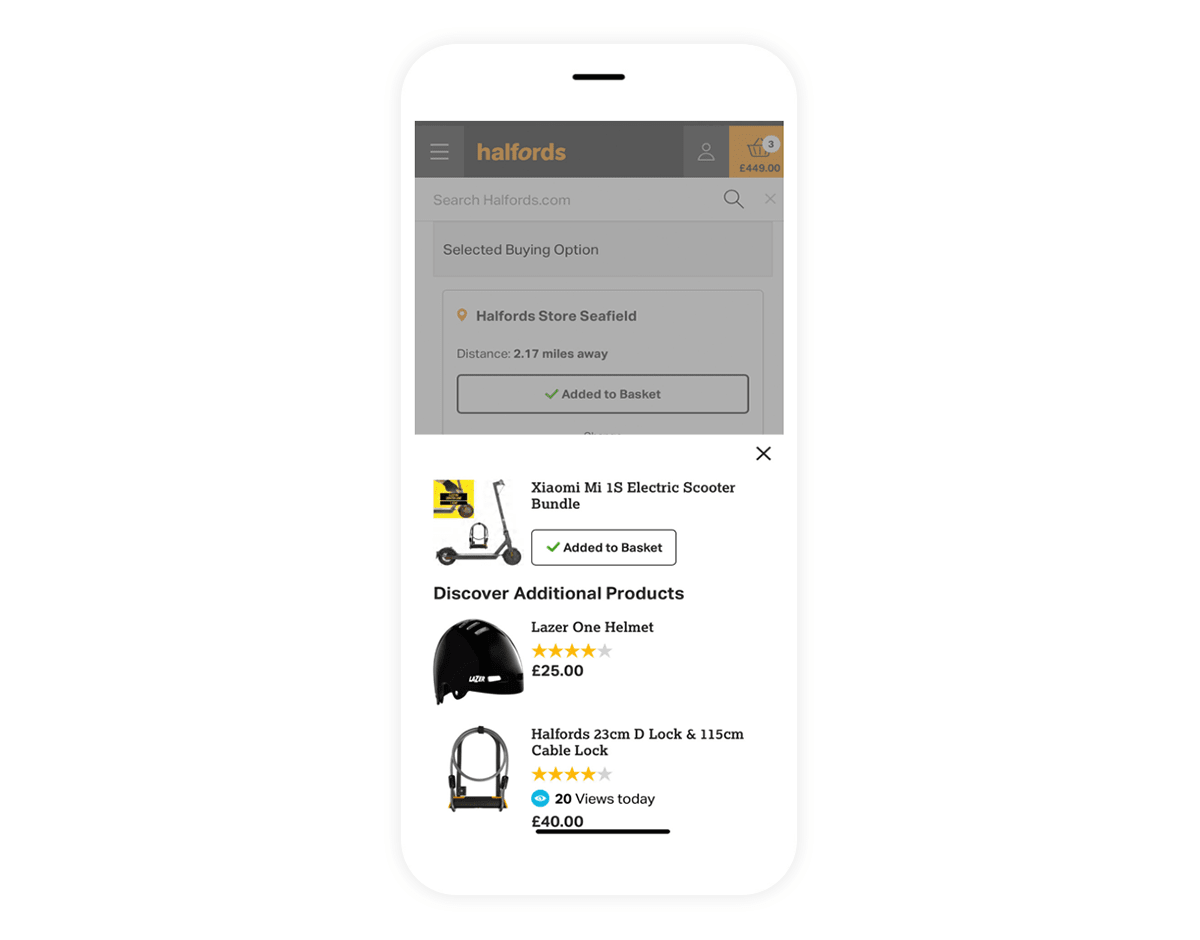
Instead, companies looking for a more general and vertical-agnostic implementation of complementary product recommendations can opt for traditional “Frequently Bought Together” or “Discover Additional Products” recommendations.
For example, here helmets and bike pads are being recommended as additional items to discover related to an electric scooter that has been added to the cart. This suggestive selling technique reminds customers of accessories and complementary items that they might have forgotten or failed to consider when they filled their cart.
Importantly, these additional product recommendations can be extremely effective. For example, one of our customers, Halfords has seen a 3% uplift in item per basket and Hobbycraft has witnessed a 4% increase in Revenue Per Visit thanks to intelligent product recommendations for cross sells.
Similar Product Recommendations
‘Similar products’ is another recommendation strategy that can be effective in the right context. For example, it may not work well to suggest other leather bags when a customer has purchased one already—yet in other contexts shoppers may be open to purchasing multiple similar products.
For instance, the UK’s largest gardening site, Crocus, a Coveo customer, observed a 1.8% uplift in revenue per visit by suggesting a mix of similar products and plants that would “go well with” the customer’s selected choice.
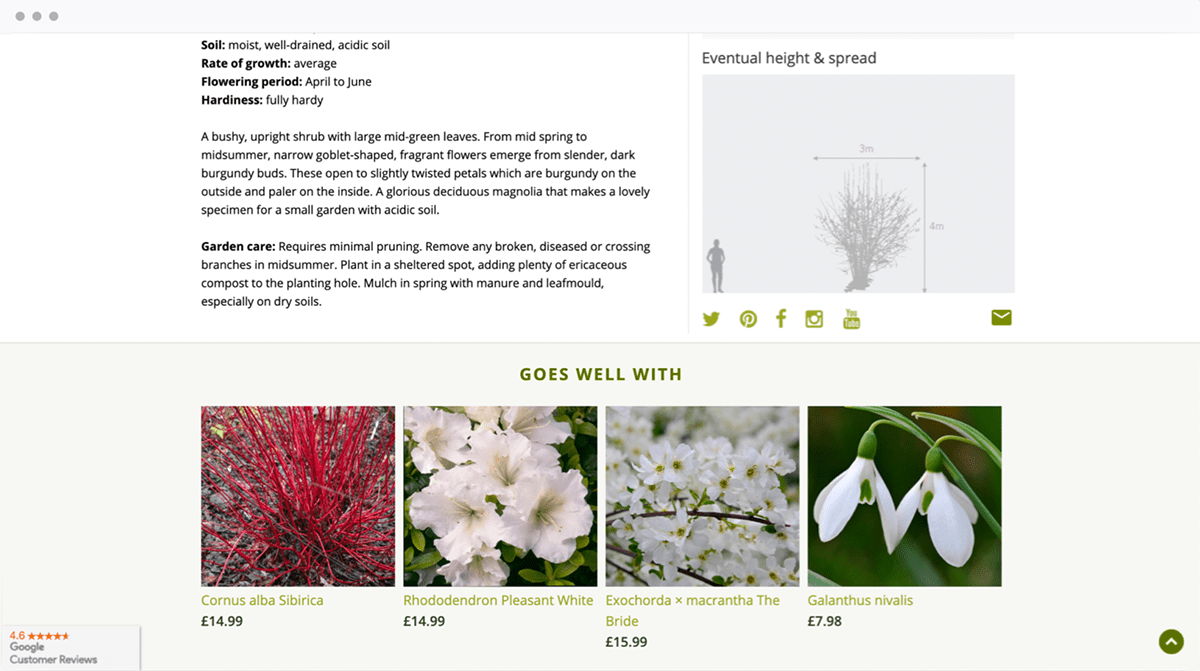
More generally, however, product recommendations for similar items can be great to also drive upsells. For example, leading pure-play sports and outdoor retailer MandM Direct witnessed a 0.72% increase in Revenue per Visit through leveraging recommendations for similar products.
Specifically, the success was due to these recommendations being able to improve not just conversion rate (by suggesting other products more relevant to the shopper) but also AOV (by suggesting similar, more expensive products, aka upselling).
Comparison Product Recommenders
However, just suggesting more expensive products does not always lead to an upsell. It’s also important to justify and make clear why a product that is more expensive would be a more relevant option.
One way to do this is through comparison recommenders. For instance, Amazon offers recommendations on product detail pages to provide alternative choices in a table with informative product specifications. This helps compare a product with similar products and highlights how the products differ.
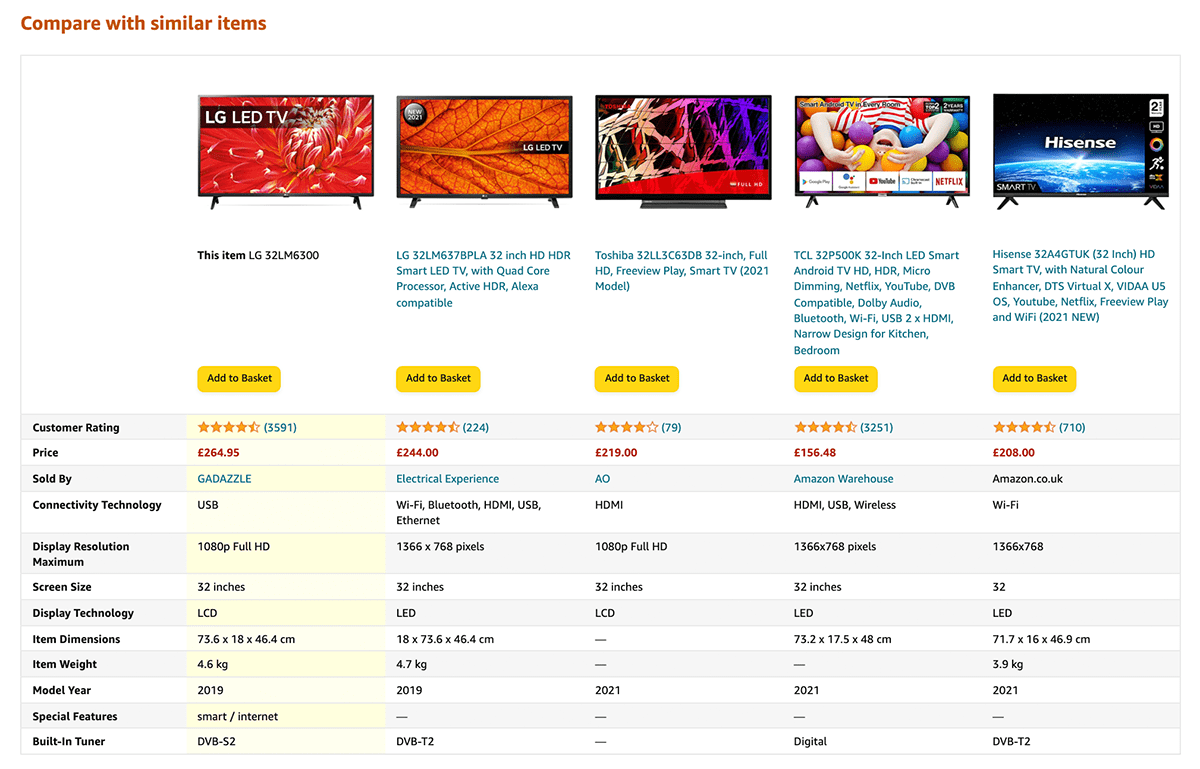
Product Badges
Besides product recommendations, product badges(also known as product labels or product stickers) can prove to be an effective way to highlight products in your online store-even in your recommendations carousel.
There are many ways in which product badges can be used to make a more expensive option more compelling, but explaining that a product under consideration is a “bestseller,” “best for you,” or in high demand can create confidence and urgency.
[Read our guide to learn why this can be such a powerful tool to upsell.]
The Underappreciated Science of Salvaging Sales
We’ve talked a lot about the art and science of boosting your company’s AOV through upselling and cross selling. However, it’s also important to mention a third aspect of suggestive selling, which is arguably as important as it is underappreciated.
We are referring todown-selling, which refers to offering a product or service to your customers at a lower price point than a product they were previously considering.
Why would you want to recommend a product that is cheaper?
Down-selling might not sound like the most enticing thing to do for your business, but it can actually be critical to ensure shoppers won’t leave your website without purchasing any items. Making a sale is better than no sale at all.
This suggestive sale tactic is appropriate when you realize a client isn’t going to buy what you’re currently offering. While you shouldn’t introduce it too early, down-selling might be a critical arrow in your quiver when it comes to salvaging sales.
One of the simplest ways you can get into down-selling is with a simple exit intent pop-up. Exit intent technology is something that Coveo uses to trigger pop-ups and offers. When a customer is looking at your website, your pop-up will appear as they attempt to leave the page. This technology allows you to not only detect and understand exit behavior via shoppers’ signals, but also to serve a relevant offer that compels them to stay and purchase.
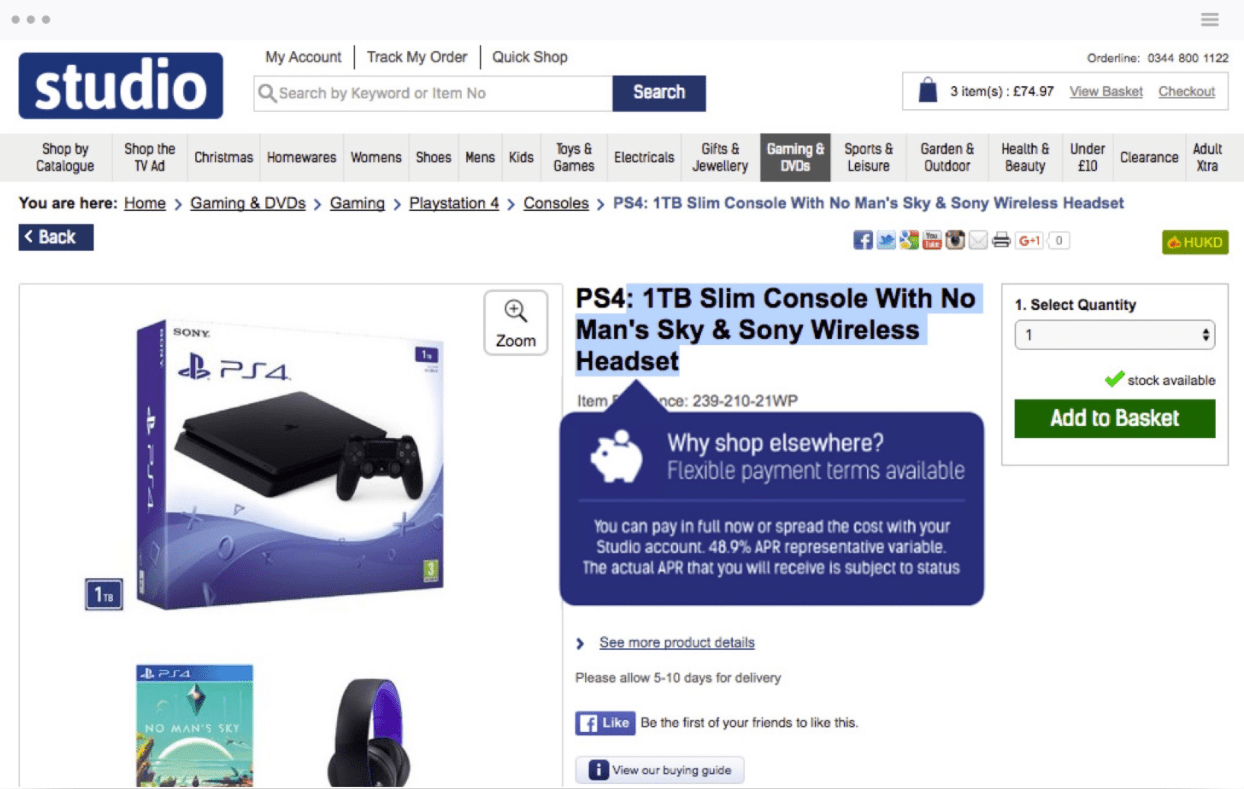
For instance, you can create a down-selling pop-up that contains a related product, but at a lower price. See how Express Gifts took advantage of our technology.
Product Recommendation Placement Matters
We’ve reviewed some of the most critical tactics available to brands and retailers trying to enable intelligent suggestive selling. And while product recommendations are not the only tactic available, they’re arguably the main suggestive selling technique.
However, what retail players often fail to realize is that it matters where these recommendations are actually placed on their site. As it turns out, simply providing recommendations for similar products at different touch points is not enough.
Product recommendation placement is a serious matter-there is no one-size fits all. The ideal placement for your site should always be tested and optimized.
For example, it’s possible that showing similar items on the cart page might actually hinder the purchase underway instead of increasing AOV as it might confuse the purchaser with more choices and lead to cart abandonment. One can argue that while there are exceptions to this (e.g., suggestions for similar products like newer versions of the same product), suggesting alternatives are usually more helpful on a product detail page while a user is still shopping – versus ready to check out. Similarly, it’s possible that showing complementary products on the product details page can be distracting to some of your customers and that it would be better for them to show complementary products at the cart or checkout stage.
It’s also possible that too many upselling and cross selling tactics results in “over-touching” the customer. In other words, bombarding the customer with offers and suggestions can train the customer to ignore these efforts, thereby desensitizing them to future attempts. Even worse, customers can get annoyed, potentially leading to customer attrition.
All of these are just hypotheses, and there is no straightforward way to rule them out from the armchair-so to speak-without testing them and looking at the actual data. In particular, while there are certainly so many things you do know about your customers, testing hypotheses and assumptions about your placement strategy and decisions is always important.
From this, it also follows that when it comes to product recommendations, you need to choose a solution and vendor that allows your merchandisers to easily run experiments to test and optimize the experiences..
[To learn more about the capabilities that a best-in-class solution must provide, consult our guide.]
Relevant Recommendations Make a Difference
Just as critical as where you place your product recommendations is ensuring those recommendations are tailored and relevant to the customer making the purchase. In particular, usability research from Baymard consistently confirms that users are quickly turned off by irrelevant recommendations and offers in the cart-often ignoring cross-sells sitewide when even one questionable recommendation is presented.
Ensuring that upsell and cross-sell recommendations are relevant to shoppers isn’t easy, though; here are some of the common obstacles retailers experience and some suggestions for overcoming them.
Keep Upsells and Cross Sells Reasonable
The first critical element is a simple requirement for ‘reasonableness’. In other words, don’t go overboard with price points.
If a customer buys a $400 coat, for example, it makes sense to suggest a $40 belt; but if a customer buys a $40 belt, you shouldn’t try to sell them a $400 coat. A sales associate would know that the suggested item should not exceed more than a certain percentage of the original item’s cost. It’s critical that also your product recommendations incorporate this valuable wisdom.
Consider what airlines do: many offer upgrades, but do so in certain increments. When someone books a trip in economy class, for instance, the airline may ask if they would be interested in more legroom or in premium economy. What they don’t do is push the traveler to upgrade to first class.
Respect the Asymmetrical Nature of Complementarity
It might be tempting to think that recommending complementary products is easy: for example, it’s a no-brainer that someone buying a pair of jeans can be persuaded to throw a t-shirt into their purchase.
But this view is simplistic. While complementary products are those typically purchased together, it’s important to appreciate how the co-purchase relationships might only work unidirectionally. For example, a power bank is often bought as a complement to mobile phones but mobile phones are not bought as a supplement to a power bank. An SD card can be a complement product to a camera but not inversely.
So, make sure that the relationship is always respected.
Warm Up Cold Start Upselling and Cross Selling
Another challenge product recommendations face is cold start problems. The term “cold start problem” originates from cars-when it’s really cold, the engine has difficulty starting up, but once it warms up, it runs smoothly. Similarly, the best recommendation systems excel at guiding us to well-received options, but have difficulty incorporating newness.
In ecommerce, classic versions of the cold start problem refer to the difficulty of recommending products to genuinely new users, and recommending products brand new to the market. This is challenging in the context of suggestive selling as well. New or long tail products rarely produce enough events to trigger complementary recommendations, and new or anonymous shoppers struggle to receive highly tailored, personalized recommendations for complementary products that really capture the shopper’s intent.
Intelligent product recommendations for upsells and cross-sells should be able to handle such cold start cases.
Using Machine Learning to Deliver Intelligent Suggestive Selling
Delivering relevant, effective product recommendations for cross-selling and upselling is not an easy task. But with cutting-edge, innovative approaches based on machine learning, it’s possible to offer recommendations that balance the above requirements while remaining both reasonable and relevant.
Digital giants invest in AI research, constantly developing and testing cutting-edge algorithms to push the boundaries of technology. If you find yourself impressed by the relevance and accuracy of Amazon’s cross-sell recommendations, that’s due to their continuous innovation.
Their recent publication on complementary product recommendation reveals that they have been leveraging product embeddings. This is an approach that we at Coveo have been widely popularizing, stressing its value in ecommerce and its role in tackling challenges such as the cold start problems discussed above.
With machine learning, you can inject personalization into the context of suggestive selling. At Coveo, we leverage proprietary machine learning technology to ensure that complementary product recommendations are also personalized and tailored to user intent.
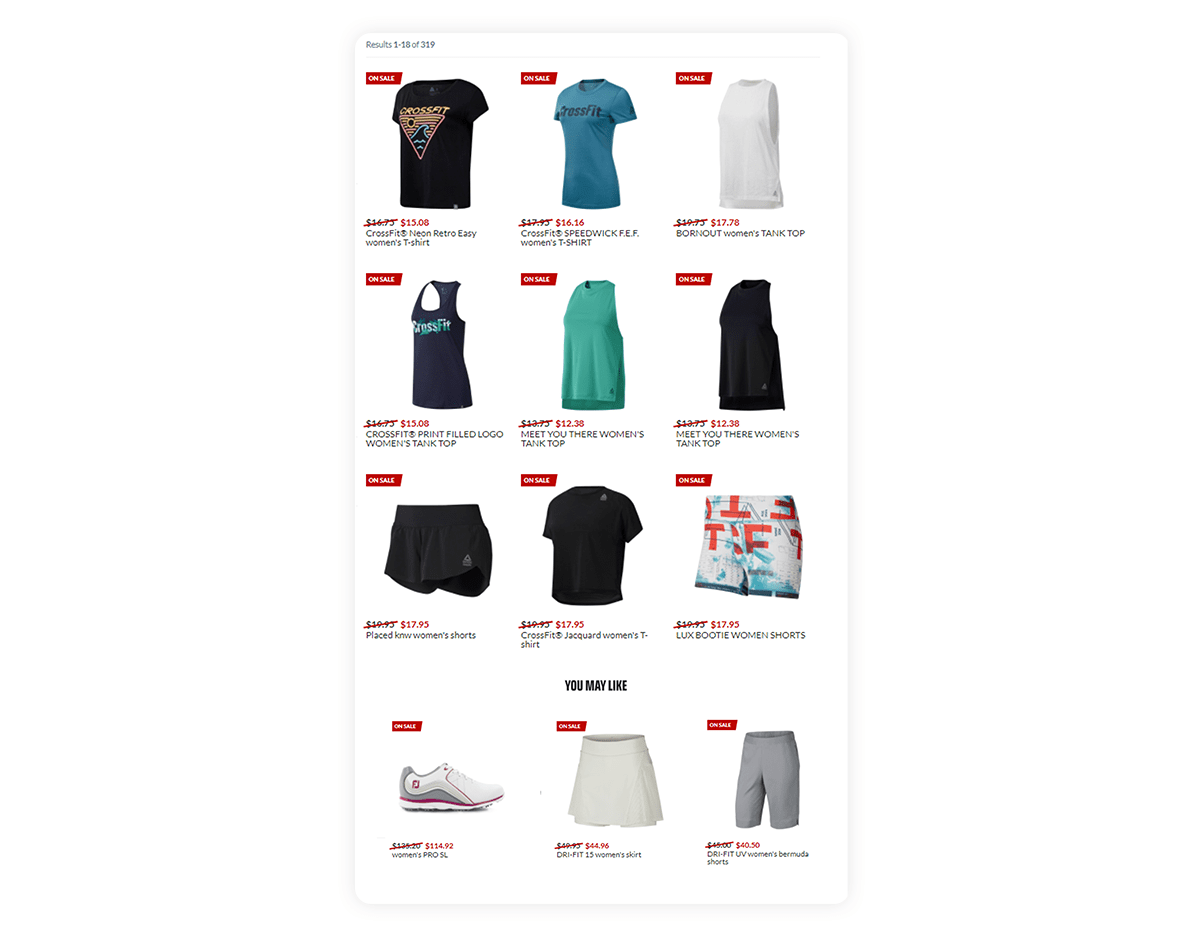
In particular, our AI team has worked on session-aware recommendations to leverage real-time behavior to predict the probable next interaction and determine the most relevant complementary product.
This is extremely important—while it might seem like a good idea to start using suggestive selling techniques with your most popular or flagship items, construct your strategy around what shoppers want. There’s more benefit associated with recommending items that are tailored to your shoppers’ preferences.
Imagine I’ve searched for some golf pants, which I’ve promptly added to my cart. The ecommerce site I’m on starts automatically recommending related golf products. These recommendations will remain relevant throughout my session by also detecting intent changes and adjusting accordingly along my journey. This is extremely important as I shift to thinking about upcoming springtime tennis sessions. After all, I wouldn’t want to keep seeing golf clubs when I’ve started shopping for tennis racquets!
Dig Deeper
Looking for deeper insights on how to optimize your conversion rate?
In our Ultimate Guide to Conversion Rate Optimization in Ecommerce, you’ll learn how to leverage synergies between touchpoints, harness the full power of analytics, and a three-step testing process for encouraging outcomes.



